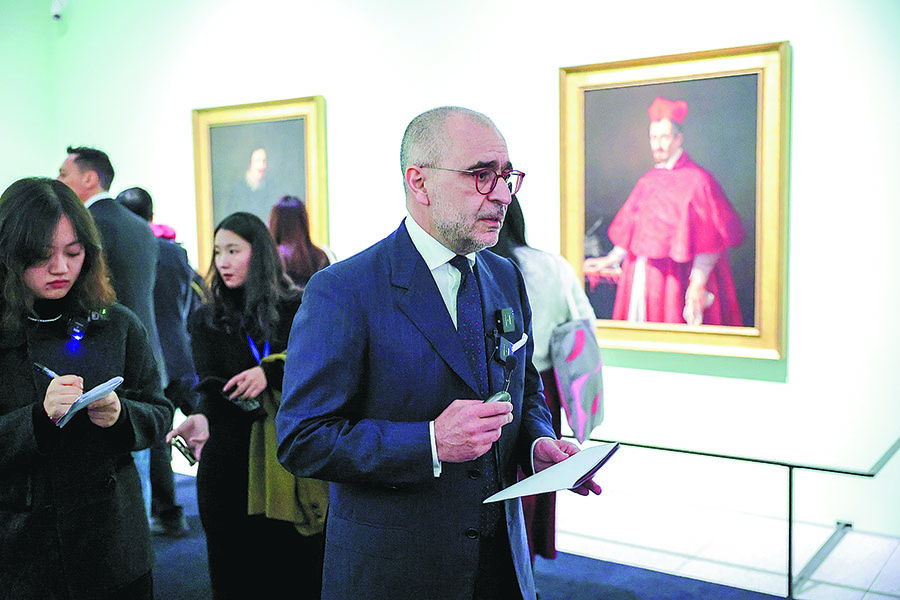

At the Shanghai Museum, visitors standing in front of da Vinci's La Scapiliata will be able to see this work's "Chinese parallel" in Tang Yin's Lady With Fan in the Autumn Breeze, which is hanging on the opposite wall.
Tang, who is better known as Tang Bohu, was an artist living in the similar time who was just as famous and as significant to China's art scene as da Vinci was in Europe.
"We designed this parallel between Chinese and Renaissance masters in two dimensions. First, we looked for artists from roughly the same historical period and prominence in public perception," says Ling Lizhong, head of the ancient Chinese painting and calligraphy department of Shanghai Museum.
"We also focused on creating a parallel between subjects, such as portraits, horses and bridges. For example, among the exhibits from Italy is Study of Legs, a sketch of the masculine legs by Michelangelo, and parallel to that we have selected from our collection a series of ink paintings by Guo Xu (1456-after 1528). In this series, you will find the vivid depiction of muscle and skeletal structure, though it portrays a demonic figure from Chinese mythology instead of a human being."
Da Vinci also displayed his incredible versatility and created, in addition to art, a slew of inventions, including a helicopter, hydraulic machines and weapons, some of the blueprints of which can be found in his Codex Atlanticus manuscript. One of the exhibits that highlight this is the Watergate Gristmill, a hand scroll created by an anonymous Chinese artist around 960. This artwork depicts an official mill plant with more than 50 people at the scene and is evidence of how advanced hydraulic development was during that period in China.
In addition to the exhibition, Shanghai Museum has opened an interactive hall on its fourth floor, where a wooden model of the gristmill can be found near an autopsy table that pays tribute to da Vinci's approach to studying the human anatomy.
While the paintings on display are classical masterpieces, D'Arelli insists that the exhibition is a contemporary experience for visitors as the design of the space and the use of lights are different from the traditional display of classical paintings.